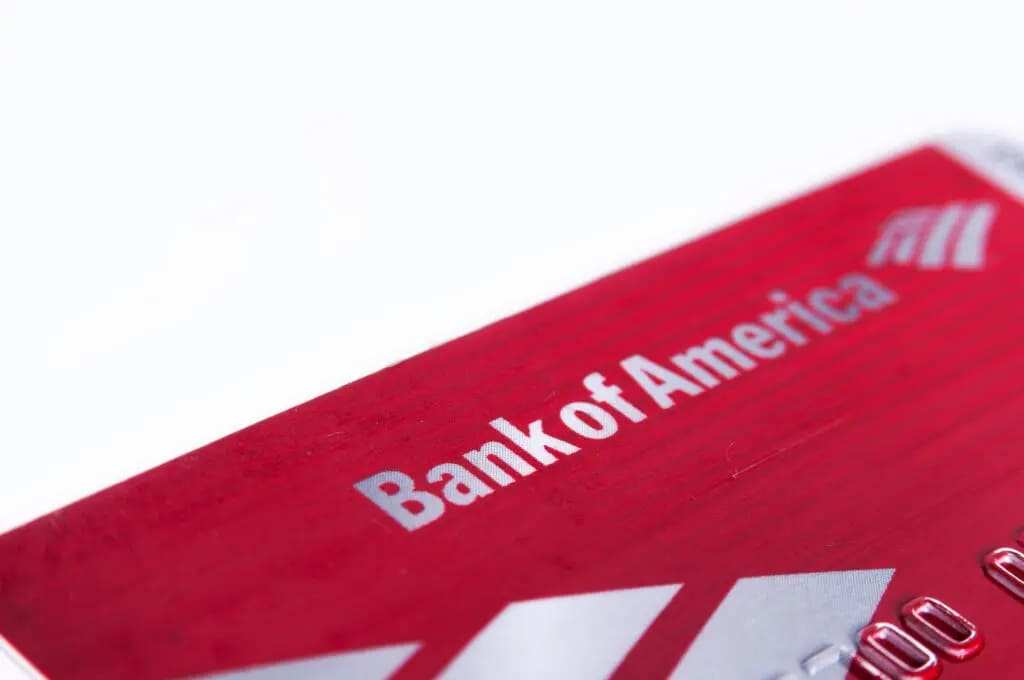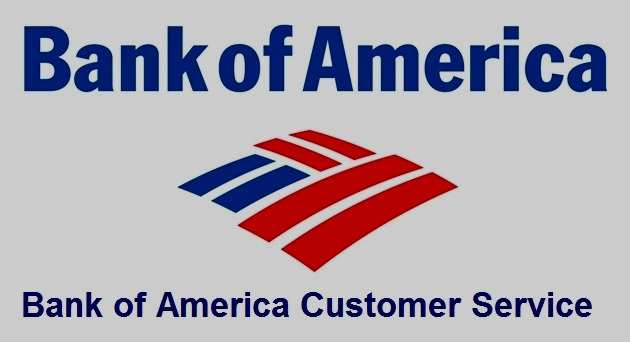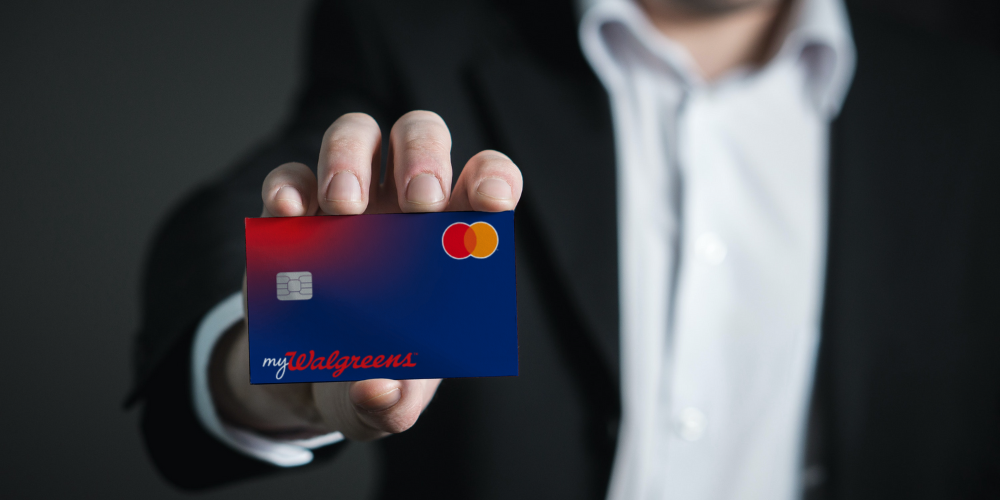But seriously, what’s the deal with signing your new Bank of America credit card these days? It feels like something straight out of a history book, doesn’t it? We’re tapping our phones, using tiny chips, and yet, when that fresh plastic arrives in the mail, there’s still that little box on the back. It makes you wonder, do you really need to sign it? Where exactly does your autograph go on a Bank of America card? And honestly, does anyone even look at that signature anymore? Let’s unravel this little financial puzzle together and get to the bottom of the Bank of America credit card signature situation.
Where Exactly Do You Sign Your Bank of America Credit Card?
Alright, let’s get straight to the point. When you unwrap your new Bank of America credit card, the spot for your signature is on the back. Look for a light-colored rectangle, typically white or gray. This is officially called the signature panel or signature strip. It’s usually located near the top of the back of the card, often right by the magnetic stripe. Think of it as the designated stage for your personal mark!
Finding this panel is usually a breeze because it’s designed to be noticeable. On some cards, you might find a clear, protective sticker over this area. Just peel that off gently before you grab your pen. Every Bank of America card I’ve seen has this clear space waiting. It’s a standard feature, even as payment technology evolves rapidly.
Step-by-Step: How to Get Your Signature Just Right on the Card
Signing your card isn’t brain surgery, but using the correct tool makes a difference. I always recommend grabbing a permanent marker, like a fine-point Sharpie. Why a permanent marker? Because the back of a credit card is plastic, not paper. Regular ballpoint pen ink might not adhere properly, could smear, or even scratch the card’s surface. A permanent marker ensures your signature is clear and lasts. According to sources like wikiHow and LendingTree, a felt-tipped pen or permanent marker is the way to go for a lasting signature.
Here’s a simple, step-by-step guide:
- Activate Your Card First: Before signing, make sure you’ve activated your new card. You can usually do this online or by calling the number on the sticker.
- Locate the Panel: Flip the card over and find that light-colored signature panel.
- Choose the Right Pen: Use a fine-point, felt-tip pen or a permanent marker (like a Sharpie).
- Sign Naturally: Use your normal, everyday signature. Consistency with how you sign other documents is more important than making it look fancy.
- Stay Within the Box: Try to keep your signature inside the boundaries of the signature panel.
- Let it Dry: This is crucial! Give the ink ample time to dry completely before putting the card back in your wallet. A smudged signature isn’t very helpful.
Why Did We Ever Sign Credit Cards in the First Place?
This takes us back a bit in time. Historically, the signature on the back of your credit card was a primary security feature. When you made a purchase in a store, the merchant was instructed to compare the signature you provided on the sales slip or terminal to the one on the back of your card. It was a manual way to verify your identity and confirm you were the legitimate cardholder.
Beyond security, your signature also serves a legal purpose. By signing the card, you acknowledge and agree to the terms and conditions set forth by the card issuer, such as Bank of America. It’s a confirmation that you accept responsibility for transactions made using that card. As Renouf Fitness points out, it legally verifies your agreement to the terms.
The Big Shift: How Security Evolved Beyond Signatures
Let’s be honest, that old signature system had its weak spots. Merchants were busy, and checking signatures diligently wasn’t always a priority. Plus, a determined fraudster could potentially forge a signature. The system wasn’t foolproof.
Enter the EMV chip – that small, metallic square embedded in the front of your card. This technology brought a massive leap in security. Unlike the magnetic stripe, which holds static data, the EMV chip generates a unique, encrypted code for each transaction. This dynamic data makes it incredibly difficult for criminals to counterfeit cards or use stolen card information for in-person purchases. Investopedia highlights how EMV chips improve security against fraud compared to magnetic stripe transactions that rely on signatures.
Because chip technology significantly enhanced security at the physical point of sale, the major credit card networks – Visa, Mastercard, American Express, and Discover – stopped requiring merchants to obtain signatures for most in-person transactions back in 2018. According to Bankrate and Nelnet Inc, this change happened in 2018. The signature simply wasn’t providing the same level of protection as the chip. In fact, Visa announced in March 2025 that they are even making the physical signature panel and digital signature optional for card issuers in the U.S.
So, while the signature panel might still be on your Bank of America card, its role as a primary security feature for transactions has largely been replaced by more advanced technology.
Is There a Specific Line to Sign On the Back?
Nope, no specific line! The signature panel is simply a designated area, a box or strip, on the back of the card. You just sign your name anywhere within the boundaries of that light-colored rectangle. There isn’t a pre-printed line inside the box itself.
Common Mistakes to Avoid When Signing Your Card
Steering clear of these simple errors can ensure your signature is valid, should it ever be needed:
- Using the Wrong Pen: As mentioned, avoid regular ballpoint pens. They won’t leave a durable mark on the plastic surface.
- Not Letting the Ink Dry: Patience is key! If you put the card away too soon, the ink can smudge, rendering the signature illegible.
- Writing “See ID”: This was a tactic some people used years ago, hoping it would force a cashier to check their identification. However, merchants aren’t typically required to ask for ID. More importantly, writing “See ID” technically leaves the card unsigned, which can violate the cardholder agreement. LendingTree explains why writing “See ID” is unnecessary and doesn’t provide extra security.
- Leaving the Panel Blank: While signatures aren’t widely checked anymore, leaving the signature panel blank technically violates the terms of your cardholder agreement. The back of the card often states something like “Invalid without authorized signature.” While rare with chip cards, a merchant could theoretically refuse an unsigned card. wikiHow mentions that most merchants are prohibited from accepting unsigned cards.
Should You Still Sign the Back of Your Bank of America Credit Card?
This is the burning question for many people. Given that signatures are rarely checked and technology has advanced so much, is it still necessary to sign that little box?
Arguments for Signing:
- Compliance: Your cardholder agreement with Bank of America likely still requires it. Signing ensures you’re technically compliant with the terms.
- Minor Deterrent: In the very rare instance that a merchant does check the back of the card, a signature could potentially deter a less sophisticated thief who might try to use a stolen, unsigned card.
- Habit and Comfort: For many, it’s just what you do when you get a new card. It provides a sense of completion and peace of mind.
Arguments Against the Necessity of Signing:
- Minimal Security Value: Compared to the security provided by EMV chips, contactless payments, and digital wallets, the signature offers very little protection against modern fraud techniques.
- Phasing Out: The industry is clearly moving away from signatures, with some new cards not even including the panel.
- Merchant Practices: Merchants are no longer required by major card networks to check signatures.
The Real Credit Card Security Heroes: Chip, Tap, and Tokenization
Let’s be clear: relying on the signature on the back of your card for security in 2025 is like using a flip phone in the age of smartphones. The real powerhouses protecting your transactions are:
- EMV Chips: These generate unique, dynamic transaction data that is incredibly difficult to duplicate, effectively preventing counterfeit card fraud at the point of sale. Investopedia details how chip-and-PIN (or chip-and-signature) cards are less susceptible to fraud than older magnetic stripe cards.
- Contactless Payments (Tap-to-Pay): When you tap your card or phone, it uses Near Field Communication (NFC) technology, which leverages the same strong encryption and unique transaction codes as the EMV chip. It’s fast and secure.
- Digital Wallets (Apple Pay, Google Pay, Samsung Pay): These are arguably the most secure method for in-person payments. They use tokenization, which replaces your actual credit card number with a unique, encrypted “token” for each transaction. Your real card number is never shared with the merchant. Plus, digital wallets often require biometric authentication (like your fingerprint or face scan) on your phone to authorize a payment, adding a significant layer of security. Sources like Bask Bank, Callaway Bank, and Portage.Life emphasize the enhanced security of digital wallets through tokenization and biometrics.
These modern technologies offer far more robust protection against fraud than a static signature on the back of a card.
What If Your New Card Has No Signature Panel?
Don’t be surprised if you receive a new card, perhaps even from Bank of America in the future, and there’s no signature panel at all. This isn’t an oversight! As the payment industry moves away from signatures, some card issuers are simply removing the panel entirely. It signifies that the card is designed to rely solely on the more secure methods like chip, PIN (for debit cards or some credit cards), or contactless technology for transaction verification. Simplii Financial confirms that a signature panel is no longer required on the back of cards and validation now happens through the chip and PIN.
Best Practices for Signing Your Card (If You Choose To)
If you decide to sign your Bank of America card (which, as we covered, is still generally required by the terms), here’s how to do it effectively:
- Use a Permanent Pen: Stick to a fine-point, felt-tip pen or permanent marker.
- Sign Clearly: Make it legible and consistent with your usual signature.
- Allow for Drying: Give the ink plenty of time to dry completely to avoid smudging.
Once signed correctly with a permanent marker and dried, your signature should hold up well to the normal wear and tear of being in your wallet.
Quick Answers to Your Credit Card Signing Questions
Let’s hit a few common questions that pop up about signing credit cards.
What if I mess up my signature when I’m signing the card?
Hey, it happens to the best of us! If you smudge it or it’s illegible, the best course of action is usually to request a replacement card from Bank of America. A clear signature is important if you want it to fulfill its intended (though limited) purpose. Renouf Fitness suggests contacting customer service is the way to get a new card sent out.
Can I use a nickname or just my initials instead of my full signature?
While you could, it’s generally not recommended. Your cardholder agreement typically requires you to sign using your legal signature that matches the name printed on the card. Using a nickname or initials might potentially cause issues if there’s ever a situation where your identity needs to be verified using the card itself, though this is quite rare now. It’s safest to use your standard, legal signature.
Do I still need to sign my physical card if I only use digital wallets like Apple Pay or Google Pay?
Technically, yes, your cardholder agreement still requires you to sign the physical card. Even if you exclusively use digital wallets, those wallets are linked to the underlying physical card number. While you might never actually show the physical card to a merchant, having it signed keeps you compliant with the bank’s terms and conditions. Plus, it’s always a good idea to have a properly signed physical card as a backup in case you encounter a situation where digital payment isn’t an option.
The Final Takeaway: Sign It, But Trust the Tech That Really Protects You
So, to wrap it up: yes, you should sign your Bank of America credit card on the designated panel on the back. Use a permanent marker and let it dry completely. It fulfills the requirements of your cardholder agreement and serves as a small, almost symbolic, nod to older security practices.
However, and this is the critical part, do not rely on that signature for your security in the modern world. The real power protecting your transactions lies with the EMV chip, the convenience of contactless payments, and especially the advanced security of digital wallets through tokenization and biometrics. Those are the technologies actively safeguarding your financial information today.
Sign your card to be compliant, absolutely. But put your trust and focus on utilizing the more secure payment methods available to you.
What are your thoughts on the signature panel? Do you always sign your cards, or have you stopped? Have you ever had a merchant actually ask to see the back of your card? Share your experiences and insights in the comments below!
Meet Oladepo Babatunde, a writer and researcher passionate about helping people navigate everyday challenges, including personal finance. As the founder of CardAdviceHub.com,
Oladepo leverages his background, including a Higher National Diploma in Computer Science and extensive writing experience dating back to 2014, to dive deep into credit card topics. He excels at breaking down information and providing practical, easy-to-understand guidance on choosing cards, maximizing rewards, and managing credit effectively.
Oladepo is committed to empowering his audience with the knowledge they need to feel in control of their financial journey.
Where Do You Sign A Bank Of America Credit Card Disclaimer
The information on Where Do You Sign A Bank Of America Credit Card is for general informational purposes only. While we strive for accuracy and conduct thorough research, we make no guarantees about the completeness, reliability, or current accuracy of the information provided, as software features (like in Where Do You Sign A Bank Of America Credit Card) and financial product terms can change.
We may receive compensation for reviews or mentions, but this does not influence our opinions.
Always verify information with official sources, including the credit card provider for terms and conditions, and official software documentation or support for features and usage.
By using the information on Where Do You Sign A Bank Of America Credit Card, you agree that CardAdviceHub will not be liable for any losses or damages arising from your use of the information provided.




